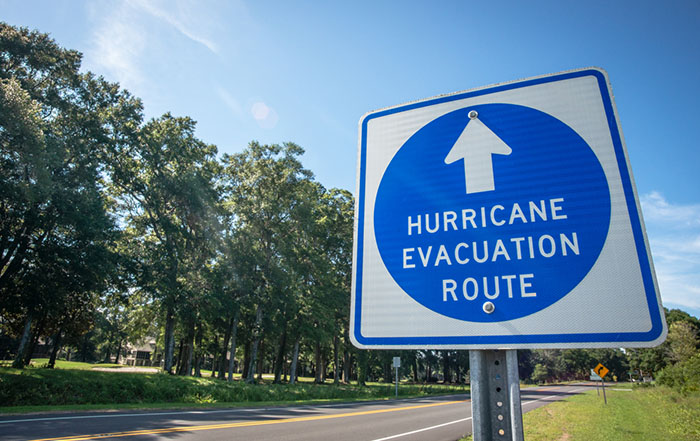June 1st has come and gone and the 2019 Atlantic Hurricane Season is now officially underway. While tropical activity doesn’t usually heat up until much later in the season, usually between August and October, emergency planners are surely keeping their ears and eyes open. After all, it was only a few months ago that Hurricane Florence (September 2018) and Hurricane Michael (October 2018) wreaked havoc in the southeastern U.S.
So what should everyone expect from this year’s Atlantic Hurricane Season? Good question. Unfortunately, there’s no real way of knowing. All the more reason you should plan ahead and prepare your community (coastal or inland) now.
What the Experts Say
The National Oceanic and Atmospheric Administration (NOAA) released its official season outlook on May 23, 2019. It said a near-average season is likely in the Atlantic basic, which includes the north Atlantic Ocean, the Caribbean Sea, and the Gulf of Mexico. Of course, an average hurricane season equates to 12 named storms, six hurricanes, and three major hurricanes. And, it only takes one, like Hurricane Katrina, to cause billions of dollars of damage and claim the lives of thousands of people.
As for 2019, NOAA forecasters say there is a 70 percent probability of nine to 15 named storms, four to eight hurricanes, and two to four major hurricanes. That means they’ll be classified as Category 3 or stronger on the Saffir-Simpson scale. There’s already been one short-lived cyclone, Andrea, that didn’t make landfall. Now, the second, Barry, has a 60 percent chance of becoming a tropical cyclone before it makes its way inland. Regardless of development, NOAA believes the disturbance will likely produce heavy rainfall over portions of southern and eastern Mexico during the coming days.
Next on the list is Chantal, Dorian, Erin, Fernand, Gabrielle, Humberto and others. All the way to Wendy (but hopefully, we won’t get that far into the list).

Another long standing outlook comes from Colorado State University. In April 2019, weather experts there anticipated a slightly below-average season in terms of activity with 13 named storms, five hurricanes and two major hurricanes.
And, then there’s the Old Farmer’s Almanac. Its early predictions indicated there should be average or slightly above average activity during the 2019 Atlantic Hurricane Season. The Old Farmer’s Almanac also went on to say that two to four hurricanes will make landfall in the U.S.
Preparedness is Key, Think Worst-Case
No matter which source you follow (or choose to believe), one thing is for certain. If yours is an area that has the potential to be affected by hurricanes, whether directly or indirectly, it is wise to always be prepared. Mother Nature is very unpredictable and, as evidenced by the past, will often unleash her fury upon us.
The best thing we can do is think worst-case as we continue to plan ahead. And, that requires taking into consideration all the things that can potentially go wrong before, during, or after a major hurricane. According to NOAA, this means:
- People can lose their belongings (whether due to the hurricane or from looting) or, tragically, their lives.
- Neighborhoods, sometimes even our own, can flood and buildings get knocked down.
- Entire cities can be shut down, residents trapped in their homes, and emergency responders evacuated when yet another hurricane rolls through already impacted areas.
- Oil and gas infrastructure can be torn apart, releasing hazardous materials into coastal waters.
- Houses, boats, and a variety of debris can be swept into the ocean.
- The very shoreline can be reshaped.
The 2019 Atlantic Hurricane Season is now upon us. If you have not reviewed, exercised or updated your operation’s emergency plan this year, do so now. It may take far less time than you think, and your community will definitely be better off because of it. That’s especially true if you’ve already asked, and more importantly, answered the tough, “what if” questions associated with the impact of a catastrophic hurricane.






